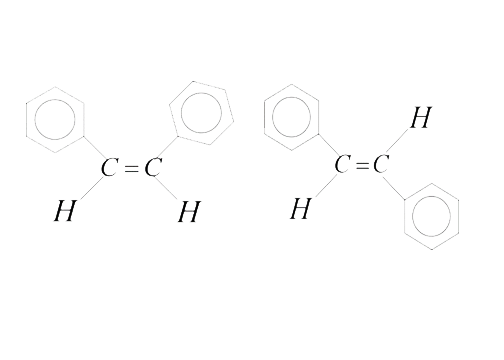Trans - esteritication is the process of
Conversion of an aliphatic acid to ester
Conversion of an aromatic acid to ester
Conversion of one ester to another ester
Conversion of an ester into its components namely acid and alcohol
The correct Answer is:C
Step-by-Step Solution:
1. Understanding Trans-Esterification:
Trans-esterification is a chemical process where an ester reacts with an alcohol to form a different ester and a different alcohol. This process involves the exchange of the organic groups (R groups) between the alcohol and the ester.
2. Identifying the Reaction:
The general reaction can be represented as:
R1COOR2+R3OH→R1COOR3+R2OH
Here, R1COOR2 is the starting ester, R3OH is the alcohol, and the products are a new ester R1COOR3 and a new alcohol R2OH.
3. Catalysis:
The reaction can be catalyzed by either an acid or a base. This means that the presence of an acid or base can speed up the reaction without being consumed in the process.
4. Products of Trans-Esterification:
The products of trans-esterification are:
- A new ester (formed from the original ester and the alcohol)
- A new alcohol (formed from the original alcohol and the ester)
5. Evaluating Statements:
Now, let's evaluate the provided statements:
- Statement 1: Conversion of aliphatic acid to ester. (Incorrect)
- Statement 2: Conversion of aromatic acid to ester. (Incorrect)
- Statement 3: Conversion of one ester to another ester. (Correct)
- Statement 4: Conversion of ester into components namely acid and alcohol. (Incorrect)
The correct statement regarding trans-esterification is the conversion of one ester to another ester.
6. Conclusion:
Therefore, trans-esterification is the process of exchanging the organic groups between an ester and an alcohol, resulting in the formation of a new ester and a new alcohol.
Final Answer:
Trans-esterification is the process of converting one ester into another ester.
---
Trans-esterification is a chemical process where an ester reacts with an alcohol to form a different ester and a different alcohol. This process involves the exchange of the organic groups (R groups) between the alcohol and the ester.
The general reaction can be represented as:
R1COOR2+R3OH→R1COOR3+R2OH
Here, R1COOR2 is the starting ester, R3OH is the alcohol, and the products are a new ester R1COOR3 and a new alcohol R2OH.
The reaction can be catalyzed by either an acid or a base. This means that the presence of an acid or base can speed up the reaction without being consumed in the process.
The products of trans-esterification are:
- A new ester (formed from the original ester and the alcohol)
- A new alcohol (formed from the original alcohol and the ester)
Now, let's evaluate the provided statements:
- Statement 1: Conversion of aliphatic acid to ester. (Incorrect)
- Statement 2: Conversion of aromatic acid to ester. (Incorrect)
- Statement 3: Conversion of one ester to another ester. (Correct)
- Statement 4: Conversion of ester into components namely acid and alcohol. (Incorrect)
Therefore, trans-esterification is the process of exchanging the organic groups between an ester and an alcohol, resulting in the formation of a new ester and a new alcohol.
Trans-esterification is the process of converting one ester into another ester.
Topper's Solved these Questions
Similar Questions
Trans Elimination
View SolutionHow many statements are true for the following pair of compounds ?

Cis Trans
(i) The dipole moment of trans isomer is zero
(ii) The boiling point of cis isomer is more than trans isomer
(iii) Cis isomer is more stable than the trans isomer
(iv) These are also called configurational diastereomers
(v) These are readily interconvertible under normal conditions
(vi) The melting point of trans isomer is more than the cis isomer
(vii) Trans isomer is more soluble than cis isomer in polar solvents
View Solution
Knowledge Check
Trans-esterification means
Apreparation of ester from esterBpreparation of ester from acidCpreparation of ester from alcoholDreverse of esterificatinoTrans esterification involves a reaction between
Atwo molecules of an esterBacyl halides and alcoholsCesters and alcoholsDacid anhydrides and alcoholsAssertion : trans-butene on reaction with bromine forms recemic mixture.
Reason : trans-compound in trans addition forms two types of stereoisomers.AIf both assertion and reason are true and reason is the correct explanation of assertionBIf both assertion and reason are true but reason is not the correct explanation of assertionCIf assertion is true but reasonb is falseDIf both assertion and reason are false.
Cis-trans isomerism is not possible in alkynes because of :
View SolutionCis-trans isomerism is not possible in alkynes because of :-
View SolutionAssertion : trans − Pent −2− ene is polar but trans − but −2− ene is non− polar.
Reason : The polarity of cis-−isomersismorethantrans-isomer,whichareeithernon- polar or less polar.
View SolutionBromination of trans but-2-ene leads to the formation of
View SolutionThe number of cis-trans isomer possible of the following compounds

View Solution
